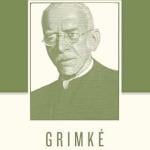- How would you describe your community’s relationship to less-observant fellow believers?
As long as the eternal line of intermarriage is left uncrossed, and no serious attack is levied against some of the core socioreligious doctrines of the Syrian Community that most prefer to leave unsaid—for their being attacked begs their being articulated, even if they hide in our hearts and minds like little tetragrammatons—anything goes. My neighbor across the street, who is also my neighbor across the pews in synagogue, loudly revs his car’s engine on the Saturday afternoons when he can be found gliding along the same streets that some of the more holier-than-thou of our Community members might otherwise occupy as though no vehicle could dare come. Some may judge him—apparently the second half of the verse, lest they be judged, does not disturb their certitude—but he will still sit in our synagogue, his children will attend our schools, he will make an appearance at whatever function or class or auction at which his attendance will be expected. My father liked to hide in his office and shut the blinds while he scrawled over Community tax returns while the people bearing the names on those returns might be napping in their seat in synagogue, waiting for the Shabbat afternoon class to start. Among Sephardic communities generally-speaking, in Israel and the United States, there obtains a greater freedom from single-minded observance or non-observance—again, so long as some fences are left standing rather proudly between any number of the various us-and-them-s by which Syrian-ness is constituted. Some would cite this liberality in our halakhic legal tradition, but to my eye there is just as much sanctimoniousness to be found therein (if one is looking for it, that is) as there is that school of Jewish legal thought for whom the first principle is “for they—the commandments—are our lives and the measure of our days:” this being a line we say every day in the blessing before the Shema prayer, the upshot of which is that we live by the commandments we accepted at Sinai, and not in spite of them, so that what may seem to the righteous minded among us to be lax or lenient may otherwise be held up to be the empathetic, loving, and sacred work of making the Jewish religion meaningful to as many people as possible in everyday life. (And not entirely un-invasively either, because the commandments will always seem invasive to those for whom the desire to swallow pork has taken root in their taste buds; nor are the thorniest of the social questions of our century, homosexuality, abortion, and so on, so easily cast away or facetiously ignored.) But there are famous and important examples of what could be called leniency among both Sephardic/Arab Jews and Ashkenazim, so the source for accepting my neighbor’s Shabbat driving may otherwise be located in the different social history of the former group—more meaningfully integrated in the Arab and Ottoman societies in which they found themselves, and having the freedom to conduct businesses to flourishing extents in those societies so long as they continued to pay the jizya or People(s) of the Book tax shared by Christians and Muslims, we their descendants similarly exhibit a sort of tolerance and pluralism by which our ancestors were treated. In any case, it will be remembered that it was a tribunal of Syrian Sephardic rabbis who, in the mid-1930s in their young and mostly-immigrant community in suburban Brooklyn, noticed the approaching scepter of that horror that will later be called in various surveys of American religious-life intermarriage, or that sin for which diasporic Judaism may someday suffer fatally—who noticed and enacted a viciously conservative attack on the institution of conversion to Judaism by composing and declaring an Edict against Conversion, to which the relative non-existence of intermarriage among Syrian Jews will in successive generations be attributed. There’s both blood and beauty in our traditions and in our reality.













